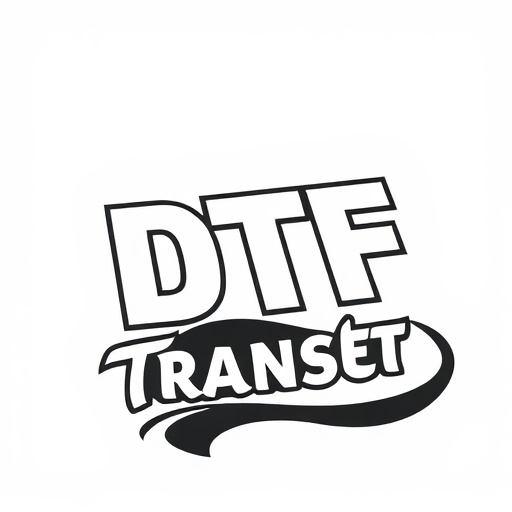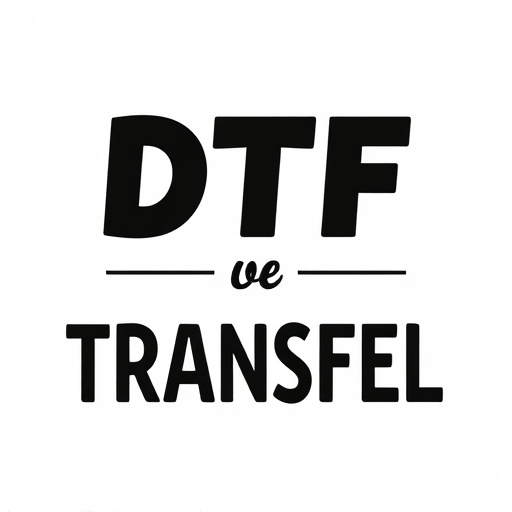Unveiling Efficient Delivery Options for Direct-to-Film Products
Direct-to-film (DTF) technology offers a cutting-edge process for applying designs directly to film…….
In the dynamic world of international trade, efficient and innovative shipping solutions are paramount for businesses and economies alike. One such groundbreaking approach gaining significant traction is DTF (Direct Transfer Factor) transfer shipping—a game-changing method that streamlines the movement of goods across borders. This article aims to dissect and demystify this modern logistics phenomenon, offering readers a comprehensive understanding of its mechanisms, impact, and potential. By exploring various facets, from its technical intricacies to global implications, we will uncover why DTF transfer shipping is not just a trend but a pivotal advancement in the logistics landscape.
Definition: DTF transfer shipping, or direct cargo transfer, is a cutting-edge shipping method that facilitates the direct movement of goods between locations without the need for traditional port calls. It involves the use of advanced technologies to optimize and automate various stages of the supply chain process.
Core Components:
Historical Context: While the concept has evolved over time, its roots can be traced back to the early 2000s when technology started to play a more significant role in supply chain management. The advent of the internet and subsequent digital transformations laid the groundwork for efficient data sharing and process automation. As global trade expanded, so did the need for faster, more flexible shipping solutions, leading to the birth of DTF transfer shipping as a response to these demands.
Significance: DTF transfer shipping offers several advantages over traditional shipping methods:
DTF transfer shipping has left an indelible mark on the global trade landscape, with its impact extending across continents:
| Region | Impact and Trends |
|---|---|
| North America | The region has seen a surge in DTF adoption due to its advanced digital infrastructure. Companies like Amazon have explored this method for efficient last-mile delivery, revolutionizing e-commerce logistics. |
| Europe | With stringent environmental regulations, European nations are embracing DTF to reduce carbon emissions associated with traditional shipping. Countries like Germany and the Netherlands are leading in developing smart logistics hubs for seamless DTF operations. |
| Asia Pacific | Rapid economic growth and dense trade networks make this region a hotbed for DTF innovation. China, in particular, has made significant strides in automating its transportation systems, integrating DTF into its robust logistics infrastructure. |
| Emerging Markets | Nations like Brazil and South Africa are leveraging DTF to enhance their competitiveness in global trade. This method offers them the potential to reduce costs and improve delivery times, attracting foreign investment. |
The economic implications of DTF transfer shipping are far-reaching, reshaping market dynamics and fueling investment opportunities:
Technology is at the core of DTF transfer shipping’s success and its future potential. Let’s explore some key advancements:
Like any innovative solution, DTF transfer shipping comes with its set of advantages and challenges:
Benefits:
Challenges:
Several companies and countries have successfully implemented DTF transfer shipping, showcasing its practical applications:
As we peer into the future, DTF transfer shipping is poised to play an even more significant role in global trade. Several trends and developments suggest its continued growth and evolution:
DTF transfer shipping represents a significant leap forward in the logistics industry, offering solutions to longstanding challenges in global trade. Its ability to streamline processes, reduce costs, and enhance speed and flexibility has captured the attention of businesses and governments alike. As technology continues to evolve and digital transformation gains momentum, DTF is poised to become a cornerstone of modern supply chain management. By embracing this innovative approach, companies can stay competitive, meet customer demands, and contribute to a more efficient, sustainable global trade ecosystem.

Direct-to-film (DTF) technology offers a cutting-edge process for applying designs directly to film…….

Direct-to-Film (DTF) technologies offer cutting-edge reproduction of visuals directly onto various s…….

Direct-to-Film (DTF) transfer and printing offers cutting-edge solutions for creating high-quality p…….

Direct-to-Film (DTF) prints combine modern technology and traditional art, offering unparalleled con…….

DTF Transfer, a game-changing technology for media creation, enables swift direct printing on film s…….

Direct-to-Film (DTF) printing offers high-quality custom art prints with precise color accuracy, but…….

Direct-to-Film (DTF) transfer technology is a versatile digital printing method for custom designs o…….

Direct-to-Film (DTF) transfer technology enables businesses to create custom products with high-qual…….

Direct-to-film (DTF) transfer is a game-changer in film distribution, allowing filmmakers to bypass…….

DTF Printing revolutionizes visual content creation, offering unparalleled customization and efficie…….